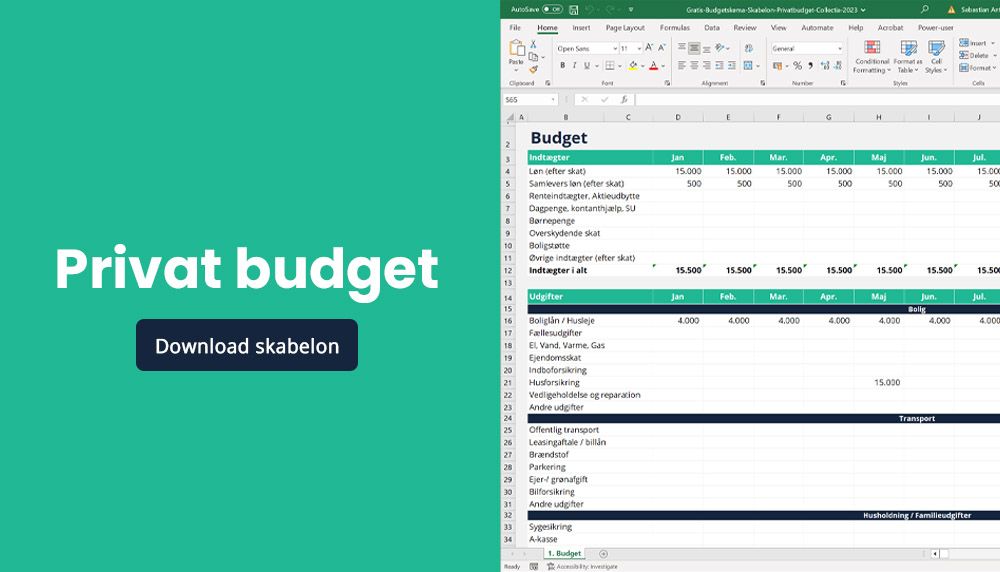
Letter of demand - everything you need to know
Many businesses often don't have much of a problem with bad payers, but if you do, you should send a letter of demand to draw attention to your outstanding balance and to initiate further action, such as debt collection.
The letter of demand is often also called a debt collection notice, a debt collection letter or a section 10 letter. However, the legally correct term according to the Debt Collection Act is letter of demand, so whichever term you use, it covers one and the same thing.
Demand letter - how does it work?
A letter of demand, also known as a debt collection notice, is a notice of debt collection, or in other words a letter about the claim you as a creditor may have against a debtor/collection dictionary/creditor/. The purpose of the demand letter is to make the debtor aware that one or more claims are unpaid, for example an invoice claim, and that you now want this to be paid. If this does not happen, the next action will be debt collection, which is clearly stated in the letter of demand.
Unlike your reminder letters, the letter of demand is mandatory and a legal requirement before you can take any further action, such as debt collection or enforcement proceedings. In other words, you must have sent at least one legally valid letter of demand before you can initiate debt collection or take legal action.
Reminder letters should basically be seen as letters where you send a reminder for one or more unpaid claims, while the demand letter also contains the same element, but with a notice that debt collection is the next step if payment is not made within 10 days of the letter being sent to the customer.
You may impose a reminder fee on a demand letter, up to a maximum of €100.
When do you need a letter of formal notice?
In principle, you can decide when the demand letter is sent to the debtor, but of course it can only be sent once the payment deadline for your financial balances has passed, for example in the form of a missed payment date on an invoice. Before this point, you are not allowed to take any action.
Once you have established that one or more claims are unpaid, you now have the option of sending the demand letter, however, many people also choose to send 1, 2 or 3 reminders, with or without a reminder fee. However, the reminders are voluntary and only an option, not a requirement.
Our recommendation is that, as a minimum, you should send the demand letter no later than one month after the due date. The longer it takes for a claim to go unpaid, the worse your statistical chances of getting your money back.
What are the requirements and rules for a letter of formal notice?
First of all, you should be aware that you have several ways of claiming your money: phone calls, personal visits to the debtor, letters, e-mails, reminders and demand letters.
Unlike the remaining options, the letter of demand is among those that are regulated. The regulation, requirements and rules for the letter of demand itself can be found in Section 10 of the Debt Collection Act. It states:
"§ 10. Before any other measures may be taken against the debtor for the purpose of recovering a claim, a letter of demand must have been sent to the debtor (...)"
In other words, you cannot start debt collection until a letter of demand has been sent that complies with the following two requirements:
- The claim must be clearly documented so that the debtor can identify the claim (In practice, it is sufficient to refer to an invoice number. You may attach the invoice(s) concerned.
- In the demand letter, you must give the debtor at least 10 days to settle the claim, and failure to do so will trigger further action in the form of debt collection.
The above two requirements are the legal rules and requirements for the letter itself. There are no requirements or rules on the layout or design of the letter, that is up to you.
Send a letter of demand
There are no requirements as to who sends the demand letter - basically you have to do it yourself, but if you choose to send a case to debt collection with, for example, us as a debt collection company, or a debt collection lawyer, they will typically send it for you - that way all parties ensure that it has been sent.
If you still want to send the letter yourself, we recommend that you send it on the same medium as you have previously communicated with the debtor. In other words, if you have previously communicated with the debtor by email, we recommend that you send it by email - also by letter or similar.
Free template for a letter of demand
There is no official template or template for a letter of demand, and you can basically design and draft it however you want - as long as you comply with the two requirements above.
Here at Collectia, we believe that debt collection should be easy, and have therefore chosen to design a template you can use for free, which also complies with all requirements and rules.
SEE ALSO: https://collectia.dk/inkasso-blog/paakravsskrivelse-skabelon/











